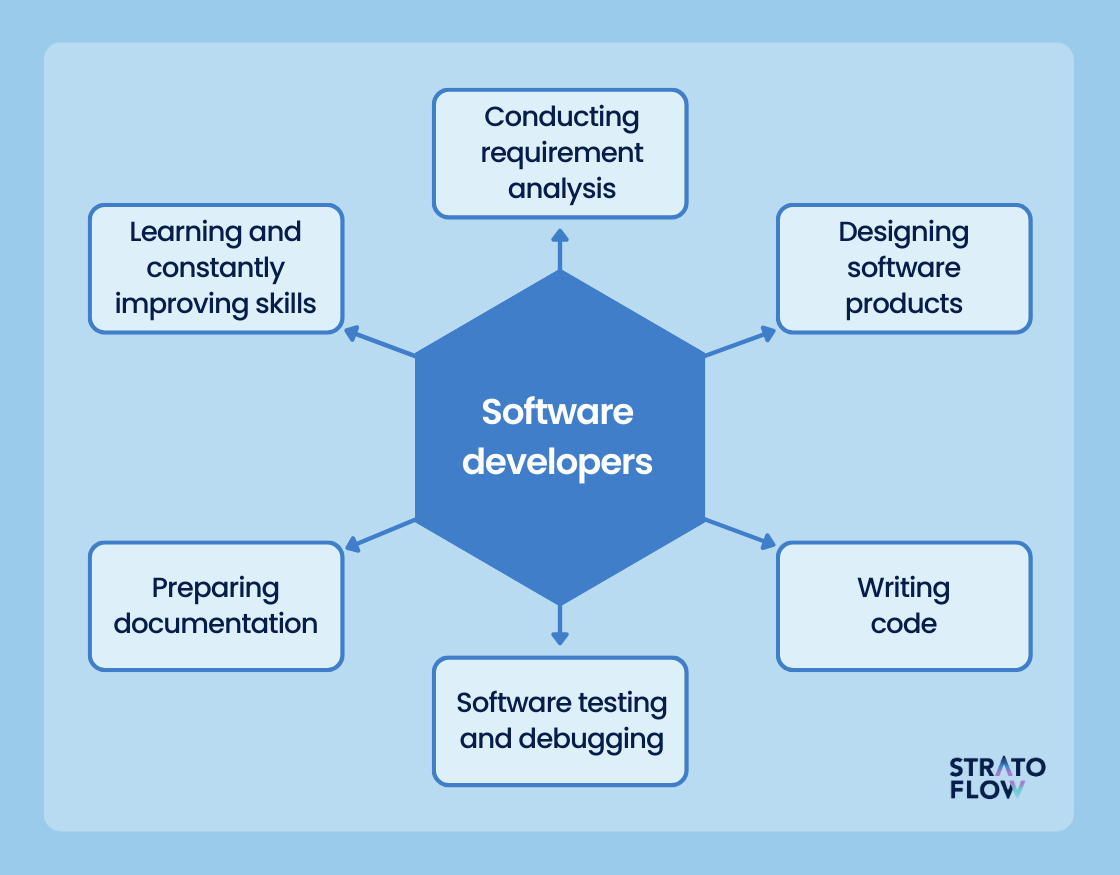Building Success with a Dedicated Development Team for Your Service Needs
Building Success with a Dedicated Development Team for Your Service Needs
Blog Article
Committed Developers vs. In-House Teams: Which Is Right for You?
The decision in between making use of dedicated programmers and maintaining an in-house team is a substantial one that can affect the trajectory of your jobs and overall business approach. Alternatively, in-house teams contribute to a natural firm society and a nuanced understanding of lasting goals.
Comprehending Dedicated Developers
The growing need for specialized abilities in the tech industry has brought about the emergence of dedicated designers as a feasible remedy for lots of companies. These specialists are usually contracted on a task basis, permitting firms to leverage particular knowledge without the long-lasting dedication connected with full-time hires. Dedicated developers are commonly ingrained within a customer's team, offering flexibility and scalability to meet project demands.
This model allows companies to access a global ability swimming pool, which is specifically beneficial in a rapidly evolving technical landscape. Committed programmers can be sourced from various geographical places, making sure that companies can find the right ability at affordable rates. They commonly bring a riches of experience and understanding, having worked with diverse projects throughout various markets.
Additionally, committed designers can focus specifically on the jobs available, enhancing performance and performance. They are furnished to integrate flawlessly right into existing workflows, teaming up closely with internal teams to attain job goals. This technique not only decreases the concern of employment and training however also permits organizations to continue to be active, adapting promptly to transforming market needs and technological advancements.
Benefits of In-House Teams

Furthermore, in-house groups tend to have a deeper understanding of the firm's mission, worths, and objectives. This alignment can boost staff member interaction and inspiration, as group members feel a lot more linked to their job and the company's success. Furthermore, having a committed internal team permits better placement of goals and techniques, as these participants are consistently concentrated on the business's top priorities.
In-house teams additionally help with quicker decision-making procedures, as they can respond more quickly to adjustments and difficulties. The well established relationships and knowledge with firm procedures permit structured process and reduced miscommunication. Ultimately, the combination of a natural culture, positioning with organizational objectives, and reliable communication makes internal groups a beneficial possession for lots of organizations, particularly those seeking to cultivate long-lasting growth and technology.
Cost Factors To Consider
When evaluating expense factors to consider, both specialized designers and in-house teams present distinctive monetary implications for companies. Involving specialized programmers usually includes a pay-per-project or per hour price design, which can be cost-effective for companies with varying job needs. This approach permits adaptability in scaling sources up or down, ensuring that firms just spend for the services they need.
In comparison, in-house teams involve dealt see this page with costs, consisting of salaries, benefits, and overhead expenditures such as workplace and tools. While this model supplies greater control and instant availability of sources, it may bring about higher long-term expenditures, particularly if the work does not justify a full-time staff.
Additionally, firms must consider the surprise prices related to recruitment and training of in-house employees, which can even more strain spending plans. In some instances, the time and sources invested in handling an in-house group can take away from the organization's core business goals.

Job Administration and Adaptability
Task management and versatility are critical aspects that affect the selection in between in-house groups and specialized programmers. Dedicated programmers commonly offer a high degree of flexibility, permitting companies to range resources up or down based on task needs. This agility can be particularly helpful for services experiencing varying workloads or those looking for to innovate rapidly. Committed groups often have established processes for taking care of jobs successfully, leveraging specific methods like Agile or Scrum, which promote iterative progress and flexibility.

Eventually, the choice in between in-house teams and dedicated designers hinges on the preferred degree of adaptability and the specific job management demands. Companies need to assess their functional dynamics, task intricacy, and source availability to establish which option straightens best with their strategic purposes.
Making the Right Choice
Selecting the best development strategy-- specialized programmers or in-house teams-- requires a cautious analysis of different factors that align with a company's critical objectives. Conversely, in-house teams can offer better continuity and integration with existing workers.
Following, evaluate your budget plan. Dedicated developers frequently offer a cost-efficient solution for short-term projects, while in-house teams might sustain greater lasting costs because of incomes, benefits, and overhead expenses. Evaluate the degree of control and partnership wanted; in-house groups commonly foster stronger interaction and positioning with business culture.
In addition, think about the moment structure. If prompt results are necessary, devoted programmers can be onboarded rapidly, whereas developing an internal team takes time for employment and training. Consider the long-term vision of your company. Investing in an in-house group might generate far better returns over time if constant development is important. Inevitably, the choice rests on an extensive evaluation of these variables, guaranteeing positioning with your firm's general goals and operational demands.
Final Thought
In verdict, the decision in between internal teams and devoted programmers hinges on task requirements and business purposes. Alternatively, internal teams grow a natural society redirected here and deeper positioning with long-term goals.
The decision in between making use of committed designers and keeping an internal team is a substantial one that can affect the trajectory of your tasks and general company method.Job administration and versatility are critical variables that affect the option between internal groups and committed developers. software engineering staffing.In contrast, in-house teams might stand out in keeping a constant job monitoring structure due to their knowledge with the organization's culture and long-lasting goals. Dedicated designers often present an economical service for short-term jobs, while internal teams might incur greater long-lasting expenditures due to salaries, benefits, and expenses costs.In conclusion, the choice in between specialized developers and internal teams pivots on task requirements and business purposes
Report this page